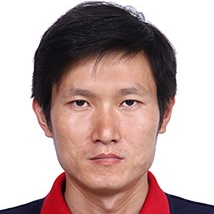Observations of Atmospheric Water Vapor and Precipitation: Observation Progress, Retrieval Challenges, and Their Correlations
A special issue of Atmosphere (ISSN 2073-4433). This special issue belongs to the section "Meteorology".
Deadline for manuscript submissions: closed (31 October 2023) | Viewed by 1806
Special Issue Editors
Interests: water vapor; clouds; precipitation; atmospheric remote sensing; microwave remote sensing
Interests: water vapor; precipitation; atmospheric remote sensing; ecological remote sensing
Interests: satellite remote sensing; infrared precipitation estimation; microwave precipitation retrieval; multi-precipitation merging; global change
Special Issues, Collections and Topics in MDPI journals
Interests: GNSS meteorology; climate change
Interests: flash flood; extreme precipitation; radar hydrology
Special Issues, Collections and Topics in MDPI journals
Special Issue Information
Dear Colleagues,
Water vapor and precipitation are key parameters in the hydrological process and weather systems. In particular, extreme precipitation is usually correlated with atmospheric rivers or the deep convergence of water vapor. Moreover, increasing atmospheric water vapor under the warming climate is significantly increasing the probability of extreme precipitation. Motion vectors derived from high spatial and temporal resolution total column water vapor are also key parameters to extrapolate precipitation in the process of merging multi-satellite precipitation. The existence of rain drops and cloud particles under precipitation conditions will also bring great uncertainties to the retrieval of water vapor at microwave bands. Therefore, studying the interaction between water vapor and precipitation will be helpful to improve the accuracy of both water vapor and precipitation. However, satellite-based IR/PMW/Radar precipitation retrieving theories and techniques are still not very insufficient. Obtaining water vapor at high spatial and temporal resolution also faces great challenges under cloudy or precipitation conditions. To explore innovative avenues for more accurately monitoring the quick spatial–temporal variations in water vapor and precipitation and study the interaction between water vapor and precipitation under the warming climate, we encourage researchers to share their new methods of water vapor and precipitation observations based on various platforms and sensors, new datasets of water vapor and precipitation, new findings related to the change in water vapor and precipitation, and their correlations. Potential topics include but are not limited to:
- New methods to retrieve total column water vapor or moisture profiles using various platforms;
- New theories and techniques for satellite precipitation estimations and retrievals;
- New multisource blended precipitation or water vapor datasets;
- New data fusion methods for precipitation or water vapor under various sensors/platforms;
- Error characteristic analysis on satellite precipitation products;
- Radiative transfer model for precipitation and clouds;
- The changing characteristics of water vapor and precipitation under the warming climate and their correlations.
Dr. Dabin Ji
Dr. Shihao Tang
Dr. Ziqiang Ma
Dr. Wei Li
Dr. Yingzhao Ma
Guest Editors
Manuscript Submission Information
Manuscripts should be submitted online at www.mdpi.com by registering and logging in to this website. Once you are registered, click here to go to the submission form. Manuscripts can be submitted until the deadline. All submissions that pass pre-check are peer-reviewed. Accepted papers will be published continuously in the journal (as soon as accepted) and will be listed together on the special issue website. Research articles, review articles as well as short communications are invited. For planned papers, a title and short abstract (about 100 words) can be sent to the Editorial Office for announcement on this website.
Submitted manuscripts should not have been published previously, nor be under consideration for publication elsewhere (except conference proceedings papers). All manuscripts are thoroughly refereed through a single-blind peer-review process. A guide for authors and other relevant information for submission of manuscripts is available on the Instructions for Authors page. Atmosphere is an international peer-reviewed open access monthly journal published by MDPI.
Please visit the Instructions for Authors page before submitting a manuscript. The Article Processing Charge (APC) for publication in this open access journal is 2400 CHF (Swiss Francs). Submitted papers should be well formatted and use good English. Authors may use MDPI's English editing service prior to publication or during author revisions.
Keywords
- water vapor
- precipitation
- remote sensing
- GNSS
- radiative transfer model
- data fusion
- climate change









